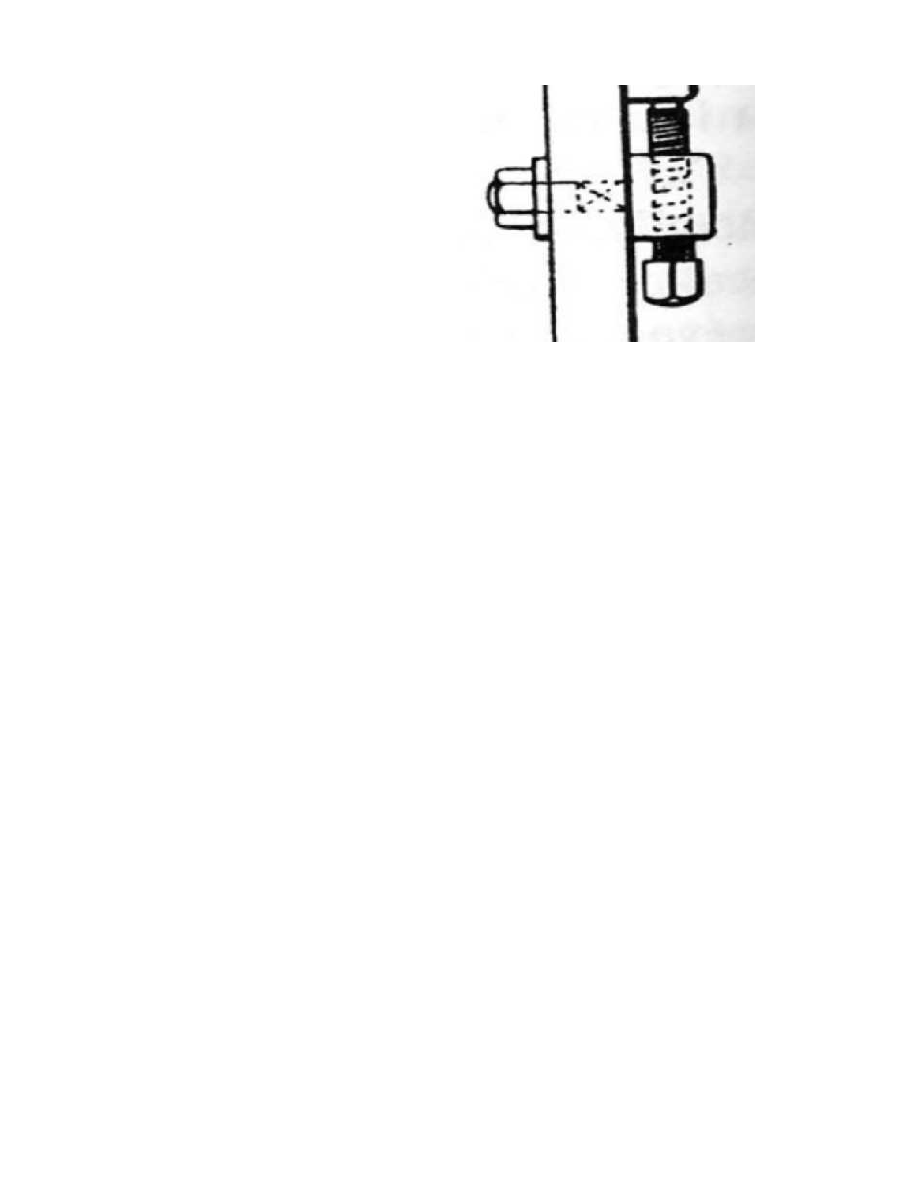
Incidentally--- The enlarged picture taken from
the faceplate (shown on the right above) shows a
wonderfully useful clamping device. To make it,
just weld a short piece of threaded rod to the side
of one of the long, coupling nuts commonly used to
connect two pieces of threaded rod. Then add a
bolt and a nut. It may help to grind a slight angle
on the coupling nut so that the screw forces the
work- piece into the face plate. That's all it takes!
Knowing how to cast aluminum alloy is vital to building a really cheap (or almost free)
MultiMachine. Cast aluminum alloy parts can replace expensive bearings, spacers, adjusters and
pulleys in your machine. Since you don't need fancy pattern-making for the MultiMachine,
casting for it is simple. You can just cast round sections and turn them into the parts you need by
using one of the "temporary" lathe designs found at the end of this booklet. These cast parts let
you adapt junk-priced pipes and shafts to the sizes you need so you can avoid buying new stuff at
retail prices.
Tools you will need
For those who don't have a power drill (or power), see the end of this booklet for a way to build a
ratchet drill. If you have only a pistol-type electrical drill, you should buy or make some kind
of stand for it.
If you have a small, bench drill press that can be made to run at slow speed (by changing
pulleys?), turn the head around and clamp the stand to the work. If you have a big drill press,
lower the head almost to the ground and make a ground-level 2x4 and plywood table to put your
work on. This provides a safe way to drill holes in 120-pound pieces of steel. For large holes, just
"step" drill (start with a small drill bit and work up an eighth of an inch at a time.)
A hacksaw (and a bunch of high-quality blades such as the 43-cent Starrett ones from ENCO)
will work for sawing. If you don't have a electric grinder, you can use a hammer, chisel, file,
and a hand cranked grinder (for grinding cutting tools) as mechanics did for hundreds of years.
I was serious when I said only basic tools were needed but I need to add three kinds of more
unusual tools that some mechanics won't have. One of these is a set of transfer punches. A set of
these will usually cost under ten dollars. Transfer screws (one half inch long pieces of threaded
rod with a point ground on one end) are extremely useful in machine building. A mechanic
should be able to make both these tools The third tool is a dial indicator that also is usually under
ten dollars. The dial indicator is needed for checking spindle and elevating table adjustments.
15

